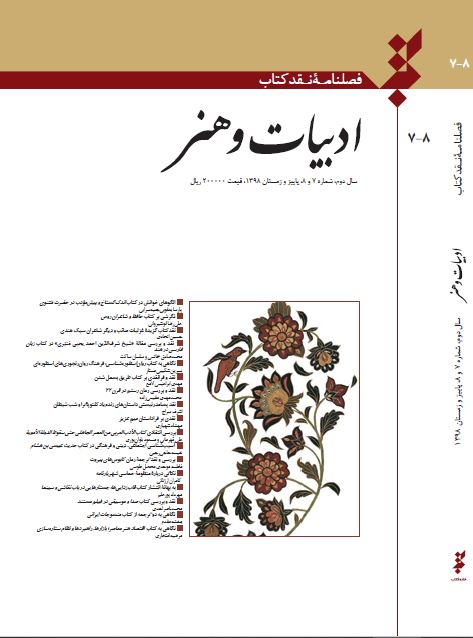Adapted Magic
A Critique of the Adaptation of Magical Realism in Iran
Author(s):
Abstract:
Magical realism was one of the trends that quickly became known, translated, and imitated in Iran’s fiction. The firs t time the door to magic realism was opened to Iranian literature was when Ahmad Mir-alai, translated the short s tories of Borges. After him, Bahman Farzaneh, with a translation of One Hundred Years of Solitude, introduced the Iranian community to magical realism. This trend used elements that were similar to those of the Old Iranian culture and literature, and Iranian contemporary fiction writers had produced works close to or similar to these works based on their own common tas tes long before the prevalence of this trend in the world. Therefore, the message of Latin American authors was not so new and out of reach to Iranian writers. The widespread and global acceptance of this trend and the exis tence of similar elements in Iranian rural culture, which was going through a transitions from tradition to modernity, created a fascination among Iranian writers if the sixties and seventies. Mos t of the active writers of this period tried to experiment with the genre. Moniroo Ravanipour, Shams Langroudi, Reza Barahani, Shahrnoush Parsipour and others were among the renowned authors that produced works in this genre. Some of these writers remained at the level of superficial imitation, and found accessible elements such as belief in supers titions and fairy tales the basis of works that are not very popular today. Others went deeper and created inner realms and native worlds. In general, Iranians became acquainted with magical realism through the translation of fictional works and s tories. At the beginning, no one thought of the translating the theory and the underlying thought frame for the idea of magic realism, therefore the unders tanding and, consequently the imitation remained superficial and of all the aspects and dimensions of this genre only a one or two dimensions were recognized and pursued. Translation of theories and intellectual foundations happened long after the translation of novels and short s tories. In the seventies and later in the 80s and 90s (Persian Calendar), there was initially one or two papers published on this topic which followed by several s tudies in this field. Undergraduate and pos tgraduate s tudents wrote dissertations on the subject, some of which facing pitfalls due to a lack of unders tanding of the theoretical foundations. The Adaptation of Magic Realism in Iran, written by Mohammad and Mohsen Hanif, is one of the late s tudies that was long due and should have been done twenty years ago. Despite extensive research and the use of new and rich sources of material about magical realism, this book shows weak points such as disunity, misunders tanding in recognition of mis takes, and the inaccurate categorization of some of some texts as magical realis t texts.
Keywords:
Language:
Persian
Published:
دو فصلنامه نقد کتاب ادبیات و هنر, Volume:1 Issue: 3, 2019
Page:
51
magiran.com/p1956854
دانلود و مطالعه متن این مقاله با یکی از روشهای زیر امکان پذیر است:
اشتراک شخصی
با عضویت و پرداخت آنلاین حق اشتراک یکساله به مبلغ 1,390,000ريال میتوانید 70 عنوان مطلب دانلود کنید!
اشتراک سازمانی
به کتابخانه دانشگاه یا محل کار خود پیشنهاد کنید تا اشتراک سازمانی این پایگاه را برای دسترسی نامحدود همه کاربران به متن مطالب تهیه نمایند!
توجه!
- حق عضویت دریافتی صرف حمایت از نشریات عضو و نگهداری، تکمیل و توسعه مگیران میشود.
- پرداخت حق اشتراک و دانلود مقالات اجازه بازنشر آن در سایر رسانههای چاپی و دیجیتال را به کاربر نمیدهد.
In order to view content subscription is required
Personal subscription
Subscribe magiran.com for 70 € euros via PayPal and download 70 articles during a year.
Organization subscription
Please contact us to subscribe your university or library for unlimited access!



